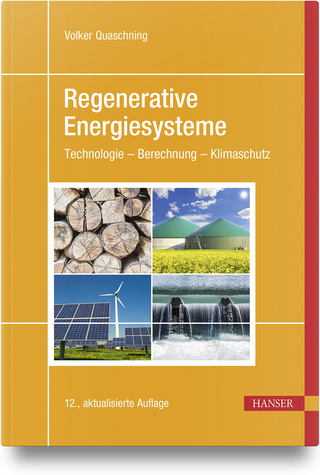
Adsorption through Advanced Nanoscale Materials
Elsevier - Health Sciences Division (Verlag)
978-0-443-18456-7 (ISBN)
Final sections examine the role of nanoadsorbents in broader environmental applications, including areas such as pollution control and removal and gas separation. Finally, other important considerations are studied, including toxicity and health impact, ecotoxicological effects, commercialization and economic issues, challenges and research gaps, trends, and future opportunities.
Chandrabhan Verma, PhD, works at the Interdisciplinary Research Center for Advanced Materials, King Fahd University of Petroleum and Minerals, Dhahran, Saudi Arabia. He is a member of the American Chemical Society (ACS). His research interests mainly focus on the synthesis and design of environment-friendly corrosion inhibitors used for several industrial applications. Dr. Verma received his PhD degree from the Department of Chemistry at IIT?BHU, Varanasi, India and MSc degree in organic chemistry (Gold Medalist). Dr. Verma is the author of several research and review articles in peer-reviewed international journals. He has also received several national and international awards for his academic achievements. Dr. Jeenat Aslam is currently working as an Associate Professor in the Department of Chemistry at the College of Science, Taibah University, Yanbu, Al-Madina, Saudi Arabia. She obtained her PhD degree in chemistry from Aligarh Muslim University, Aligarh, India. Her research is mainly focused on materials and corrosion, nanotechnology, and surface chemistry. Dr. Jeenat has published several research and review articles in peer-reviewed international journals. In addition, she has authored more than 40 book chapters and edited more than 30 books for different prestigious publishers. Mohammad Ehtisham Khan received doctorate degree in Chemical Engineering from Yeungnam University, the Republic of Korea in 2017 and presently working as an Assistant Professor and Head of the Department in Chemical Engineering Technology at Jazan University, Kingdom of Saudi Arabia. Dr. Khan is working in the cutting-edge area of nanosciences and nanotechnology, especially inorganic materials, such as, the fabrication of metal-metal oxides and carbon-based nanoparticles/nanocomposites various novel applications in the field of energy, environment, and biological applications such as catalysis, photocatalysis, photoelectrodes, optoelectronic devices, hydrogen production, sensing, and selected biological applications. Dr. Khan has 37 publications in international peer-reviewed journals, conference proceedings, and Editing 3 books in Elsevier with contributed in 14 book chapters.
PART 1. Overview of Adsorption, Adsorbents and Nanoadsorbents 1. Adsorption: Introduction, Properties and Classification 2. Nanoadsorbents: Synthesis, Characterization and Industrial applications 3. Factors Affecting Adsorption Capabilities of Nanoscale Materials 4. Enhancement of Adsorption Capabilities by Surface Functionalization 5. Principles of Adsorption and Adsorption Processes 6. Advantages and Disadvantages of Nanoadsorbents
PART 2. Nanoadsorbents for Industrial Wastewater Treatment 7. Carbon Nanotubes based Nanoadsorbents in Wastewater Treatment 8. Graphene and Graphene Oxide based Nanoadsorbents in Wastewater Treatment 9. Carbon Dots and Fullerene based Nanoadsorbents in Wastewater Treatment 10. Polymer Nanocomposites based Nanoadsorbents Wastewater Treatment 11. Metal Oxides and their Nanocomposites in Wastewater Treatment 12. Nanoclay based Nanoadsorbents for Wastewater Treatment 13. Nanofillers based Nanoadsorbents for Wastewater Treatment 14. Adsorption based filtration membranes for Wastewater Treatment
PART 3. Nanoadsorbents for Environmental Applications 15. Nanoadsorbents in Air Pollution Control 16. Nanoadsorbents in Separation of Noble Gases 17. Nanoadsorbents in Removal of Humidity and Moisture 18. Nanoadsorbents in Adsorption Chromatography 19. Nanoadsorbents in Industrial Pollution Control 20. Nanoadsorbents in Removal of Inorganic Pollutants 21. Nanoadsorbents in Removal of Biological Pollutants 22. Toxicity and Health Impact of Nanoadsorbents
PART 4. Commercialization and Emerging Trends in Nanoscale Adsorption 23. Ecotoxicological Effects and Socio-economical Aspects of Nanoadsorbent Materials 24. Challenges, Research Gaps and Future Prospects of Nanoadsorbents 25. Commercialization and Economics of Nanoscale Adsorbent Materials
| Erscheinungsdatum | 03.08.2023 |
|---|---|
| Reihe/Serie | Micro & Nano Technologies |
| Verlagsort | Philadelphia |
| Sprache | englisch |
| Maße | 191 x 235 mm |
| Gewicht | 450 g |
| Themenwelt | Technik ► Elektrotechnik / Energietechnik |
| Technik ► Maschinenbau | |
| ISBN-10 | 0-443-18456-9 / 0443184569 |
| ISBN-13 | 978-0-443-18456-7 / 9780443184567 |
| Zustand | Neuware |
| Haben Sie eine Frage zum Produkt? |
aus dem Bereich


